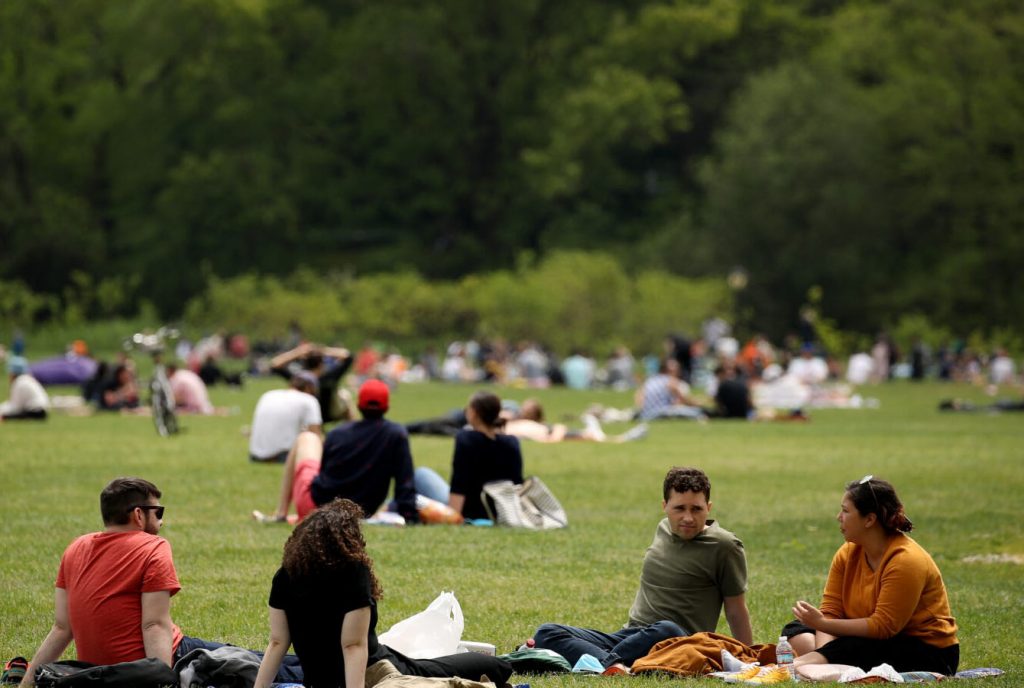It is without a doubt that the COVID-19 pandemic has impacted almost every individual in the world in some way; the loss of loved ones, having to learn and work remotely, and not being able to family or friends, just to name a few. These repercussions of the contagious virus have turned many lives upside down. No one could have prepared for suddenly being quarantined and restricted indefinitely from seeing the people they love. No one could have prepared for saying goodbye to family members in previously good health. No child could have prepared for not socializing with friends everyday and learning through a computer screen. The fact that these life altering scenarios were unprecedented makes them so much harder to deal with. As a result of the pandemic, many people around the world have developed new or worsened struggles with their mental health, what many are calling a mental health crisis.

Mental health, even prior to the pandemic, has been a leading struggle in lives across the world. According to the National Institute of Mental Health Disorders, more than 25% of adult Americans suffer from a type of mental illness each year. This percentage has increased unimaginably during the pandemic, rising to almost half of the population being affected. Anxiety and depression, among other illnesses, greatly increased from 2019 (Lumpkin). As mentioned earlier, no one could have been ready for the sequence of events that would create substantial changes to their everyday lives. Understandably because of this, many did not know how to cope. How do you expect a 10 year old to smoothly transition to sitting at a desk all day without any form of socialization or time for creative play? Or a freshman at college stuck in a dorm room and not allowed to make any friends? Or grandparents not knowing when they will ever see their families again? The precautions taken to prevent the spread of COVID-19 were certainly necessary, but it is no secret that they had their own negative effects on health, being mental health.
“I felt like I was spiraling…I just didn’t expect the mental impact,” a college student reveals about her isolating experience during the pandemic (Lumpkin). It is a widely known reality that many college students suffer from poor mental health due to stress of classes and social pressures. Most students find the most fulfillment and joy from spending time with their closest friends at school; however, social distancing has stripped students of this. Friends are there to help give advice, bring laughs, be a shoulder to cry on, and be there to navigate the challenges of school together. One college student simply describes the current situation like this: “the one thing keeping me from absolutely losing my mind was just taken away,” the one thing being seeing her friends. College is also “the most social time of your life,” she says (Lumpkin). Along with feeling lonely and helpless, students are also having to acknowledge that they are missing out on what should be “the best four years of your life.” That is a hard pill to swallow. And similarly for young children, they have been taken away from their friends who they normally play with on the playground, eat lunch with, and use their imaginations with. Children are meant to socialize. College students are meant to socialize. The human species thrives on socialization; interacting with other human beings “helps sharpen memory and cognitive skills, increases your sense of happiness and well-being” (Williams).
The mental health crisis that has developed has also caused another pressing issue: a lack of mental health resources. Evidently, before the pandemic, there was already an insufficient amount of mental health providers, including therapists and psychiatrists (Gold). Now that there are many more people in need of mental health support, providers are becoming less and less available. Schools typically only have one to a few staff that are designated to and are qualified to provide support to students struggling. And not only that, but many schools do not promote seeking help or advertise that there is always someone on campus who is willing to help. Students oftentimes are forced to believe that if they are not “sick,” that they will “get over it” and be fine. No matter what the student is feeling, if they are struggling with any mental health issues, they should feel supported by the school and should be able to receive help. Mental health is a serious issue that is affecting people now more than ever, especially students, and resources need to be more available.
Mental health struggles affect all of us. Even without a pandemic, everyone’s feelings are valid. Life has many challenges and they are bound to affect you in some way. There are many online resources that can help you cope with different feelings. The CDC has developed a list of coping mechanisms and has updated it to be specific for during the pandemic. The list can be found here: https://www.cdc.gov/coronavirus/2019-ncov/daily-life-coping/managing-stress-anxiety.html Also, there is a 24/7 national helpline called SAMHSA that will provide support, give treatment referrals, and other information. The number to call is: 1-800-662-HELP (4357).
Sources
https://www.washingtonpost.com/education/2021/03/30/college-students-mental-health-pandemic/

Leave a Reply
You must be logged in to post a comment.